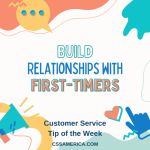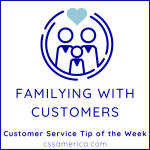Zappos delivers great customer service, but its leader seems to talk mostly about his corporate culture. Disney is always brought up in seminars we provide for their great customer experience, but so much of what makes it a great experience is the consistently high performance of its “cast members.”
Culture and customer service are intertwined in great companies, and that’s why it’s no surprise that the article NY nurse executives focus on positivity addresses how to drive higher patient satisfaction by creating a patient-centered culture. According to the article, successful healthcare organizations possess a “strong unit and organizational leadership that promote a service culture tied to operations and finance; effective partnerships with patients and families; an engaged and satisfied workforce; and a strong performance improvement focus.”
Note what’s being discussed here…leadership that’s strong…leadership that promotes service…an organization that realizes patient/customer satisfaction is intertwined with operations (processes) and finance (business outcomes). They address partnering with customers, having motivated staff, and continually improving.
I agree with all these points; most cohesive cultures are created and fostered by leaders who have a well-articulated vision, who practice what’s preached, who understand the process impact on patient satisfaction and the patient satisfaction impact on financials.
But some of the “hows” are missing from the article. How do you get an engaged workforce? How do you continually improve? Leadership is the start, but that focus on patient satisfaction has to begin with your hiring process and criteria for staff, what you reward them for doing, and how you hold them accountable. A patient-centered culture requires training and an internal communication plan that is proactively conveying the messages to staff that you want repeated to patients. Patient-centered cultures require smooth information flow from patients and families to staff and leadership, so data-driven improvements can be made real-time when needed and through root-cause analysis when recurring issues occur.
To create a patient-centered culture, get leadership on board, and get the ball rolling through hiring, motivation, accountability, training, communications, process design, and continuous improvement.
Create a great culture with your people to create a great experience for your customer.
Did you like this post? Here are other Healthcare-related posts:





















